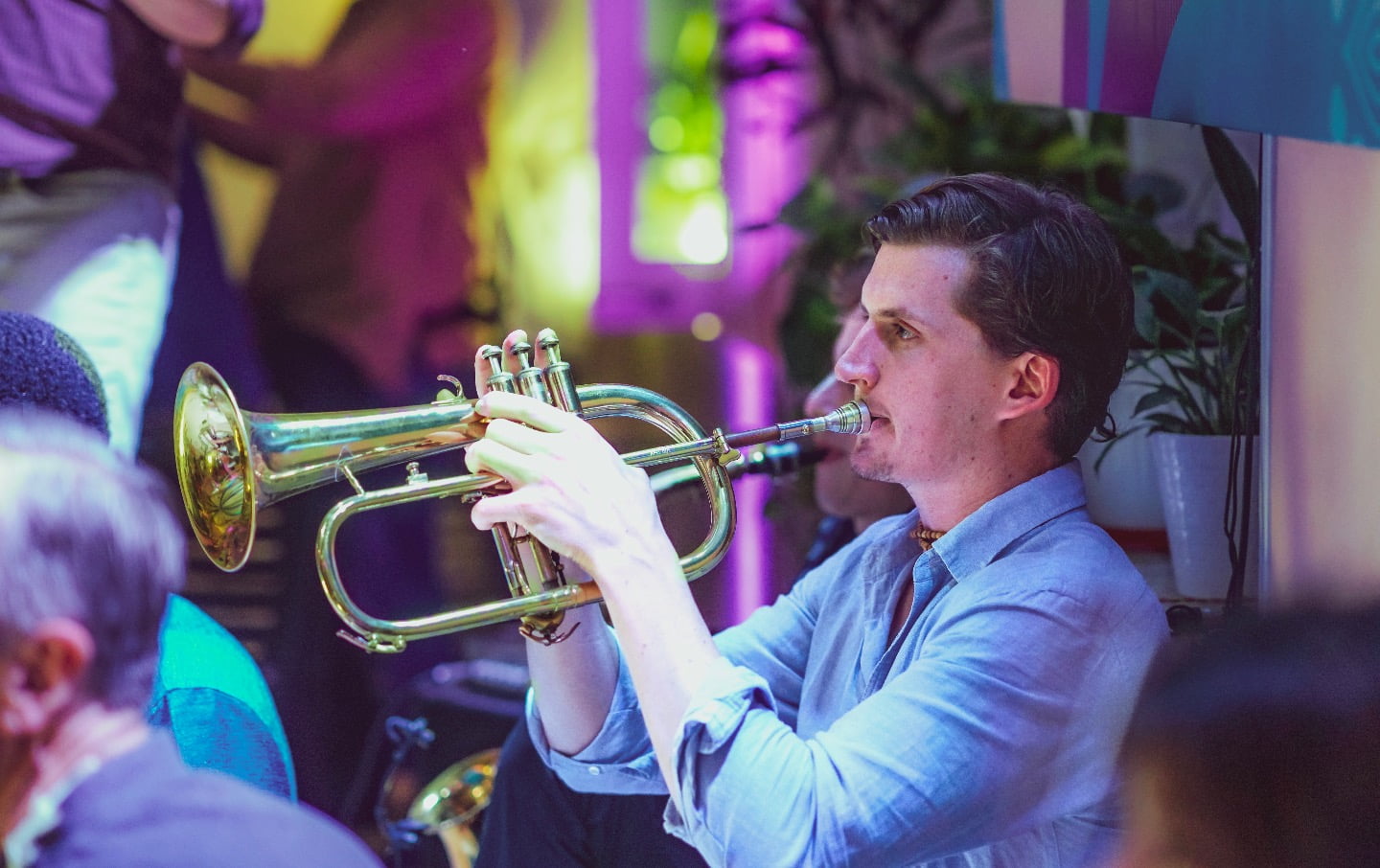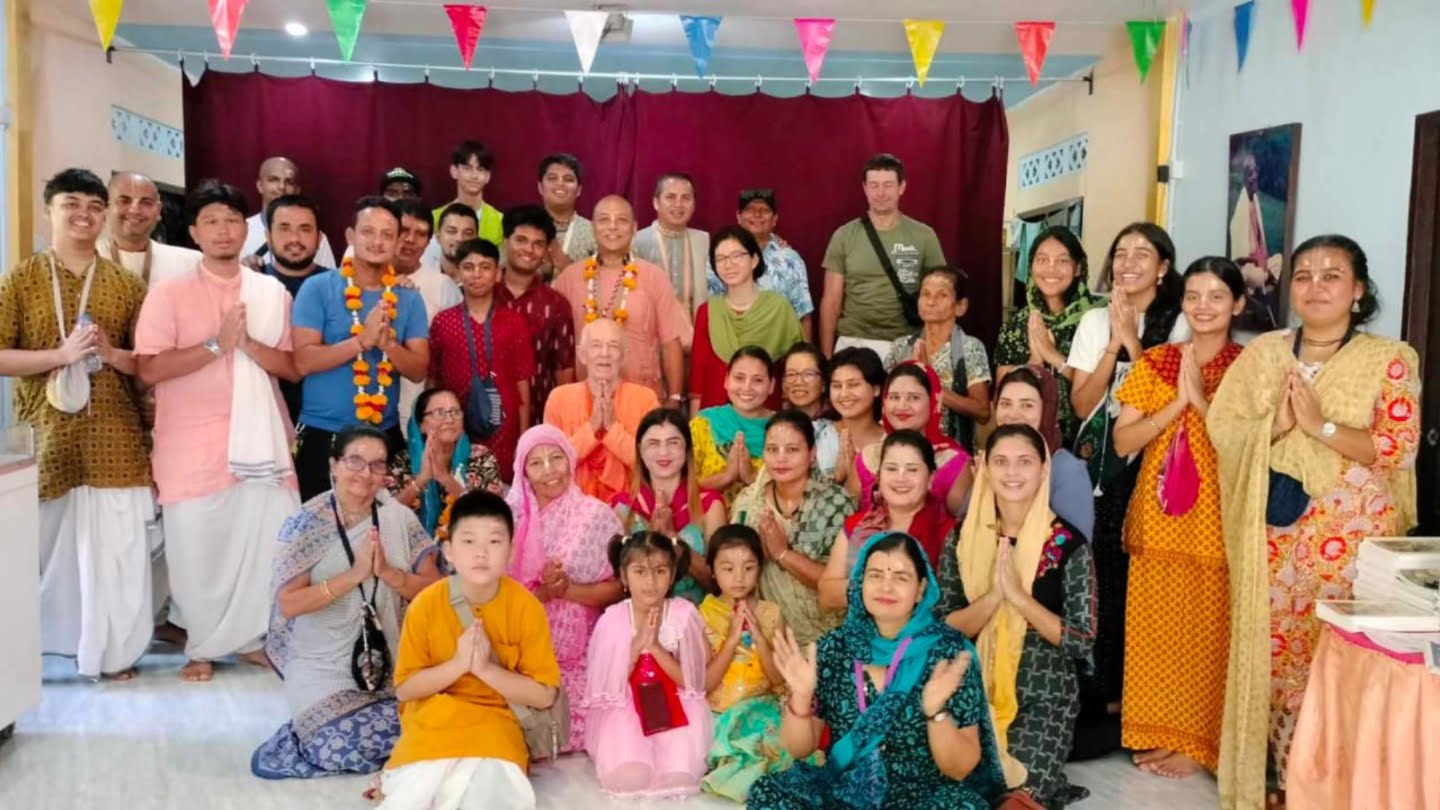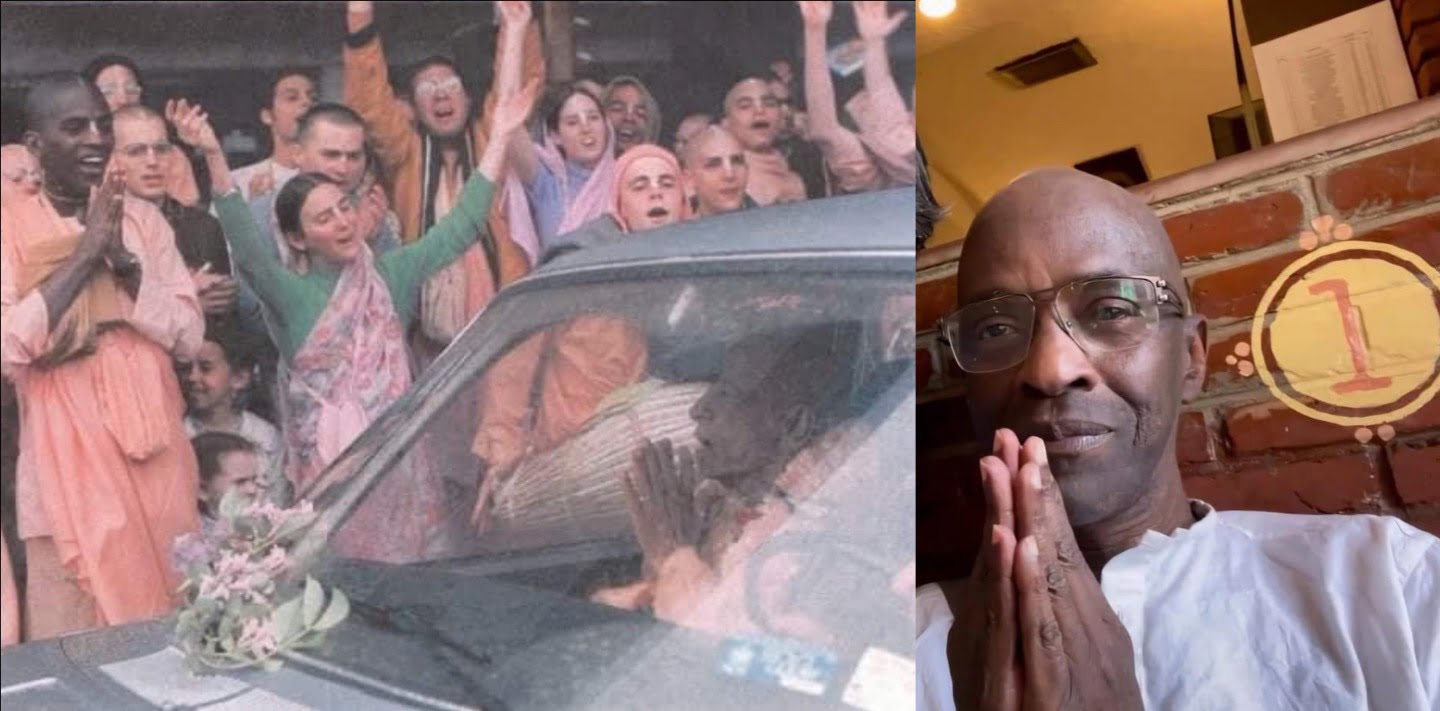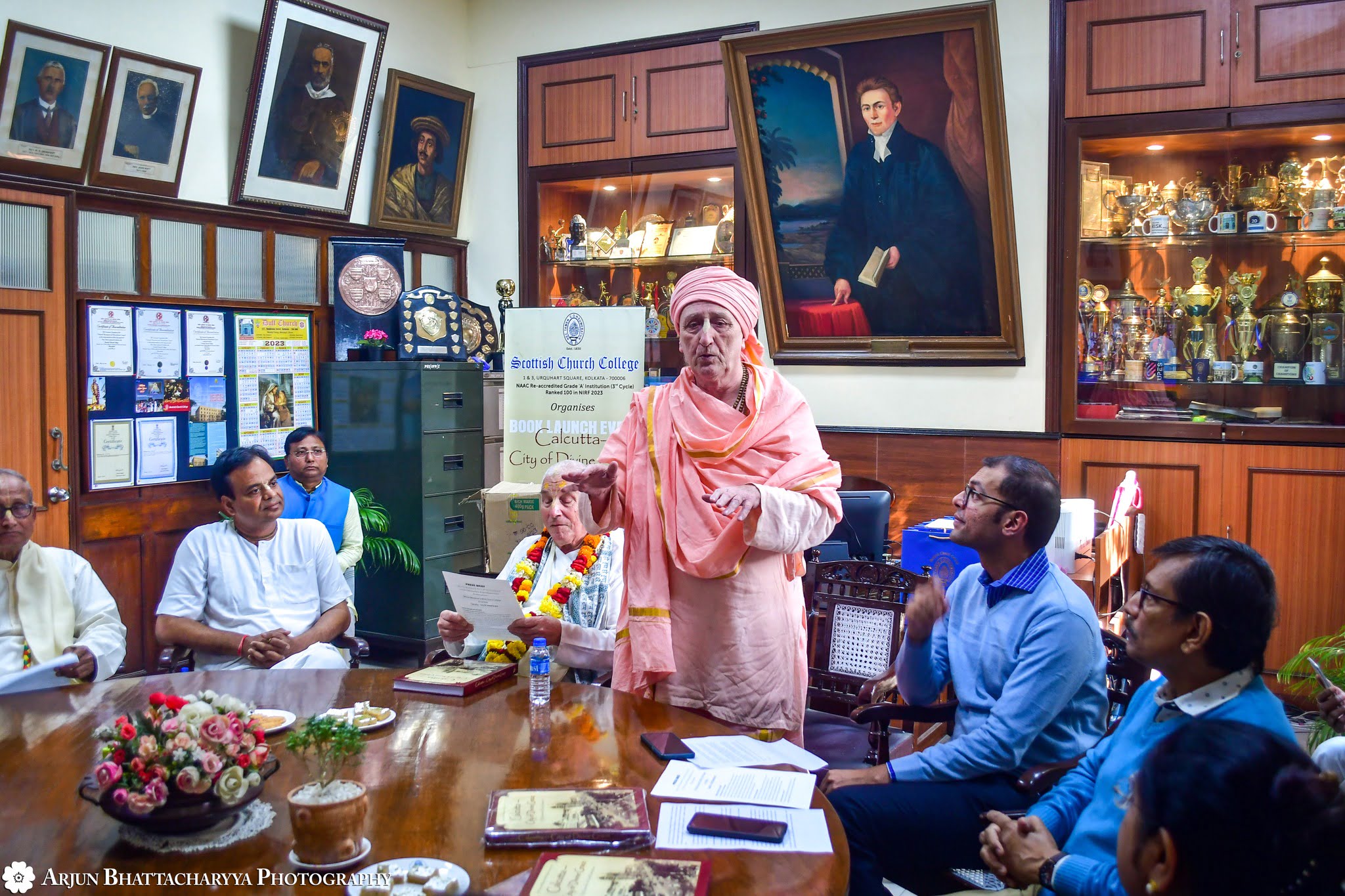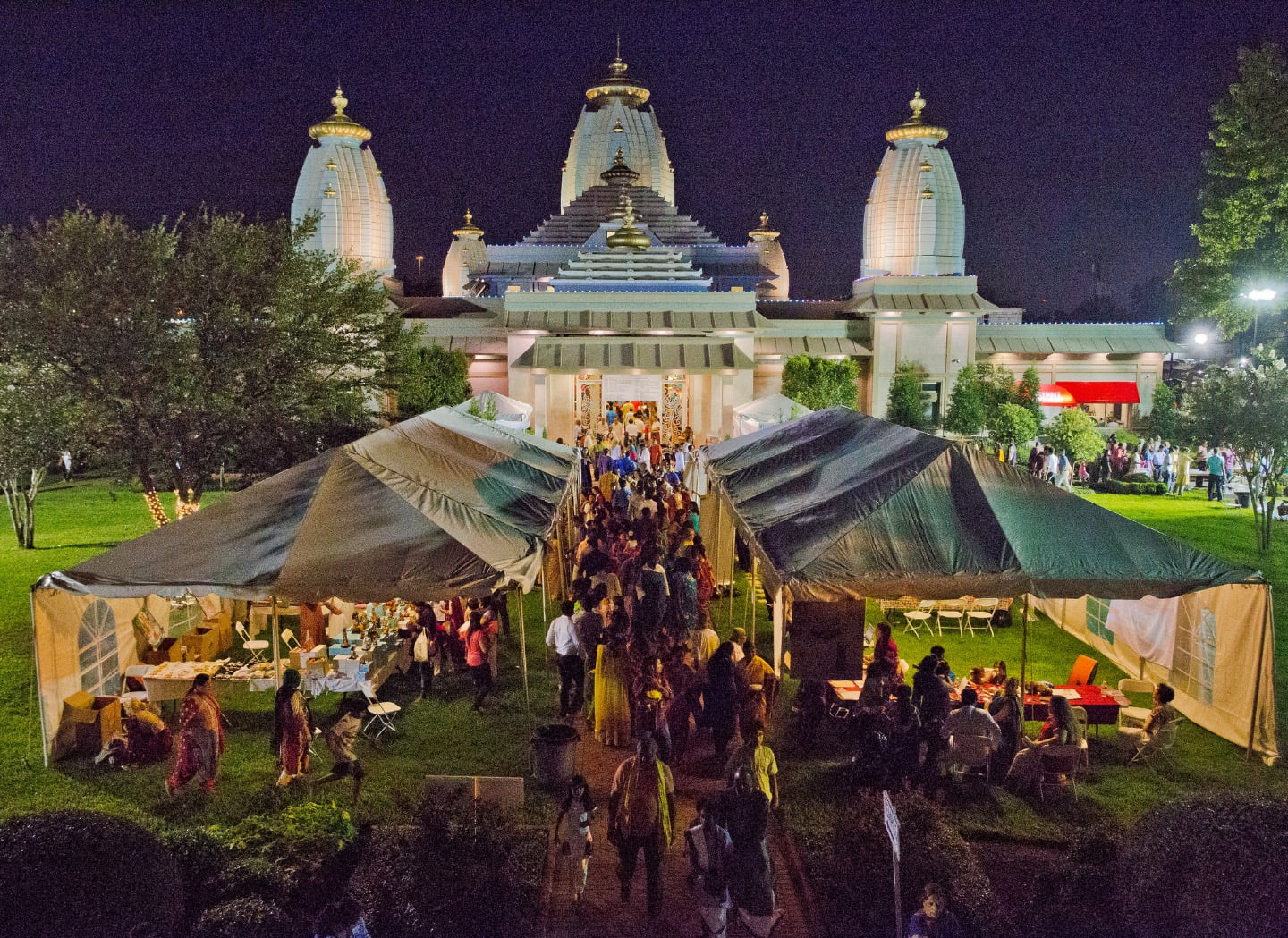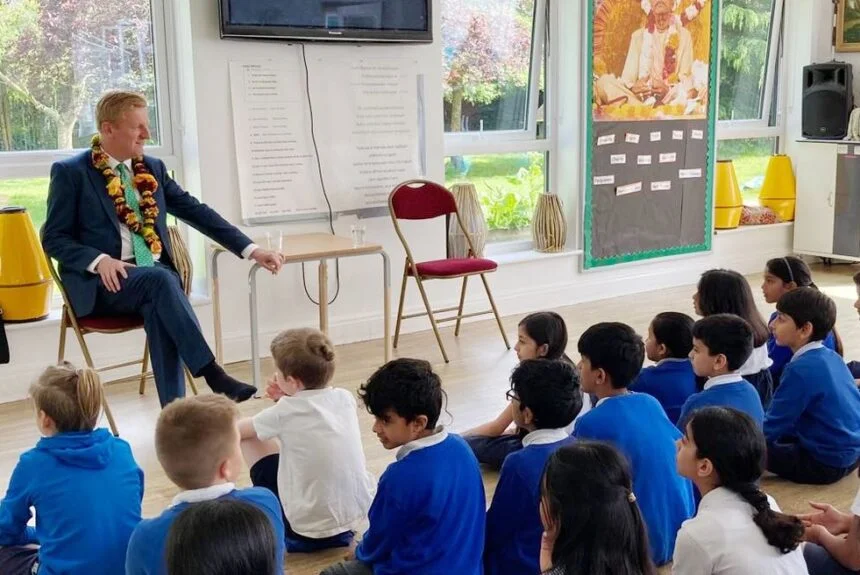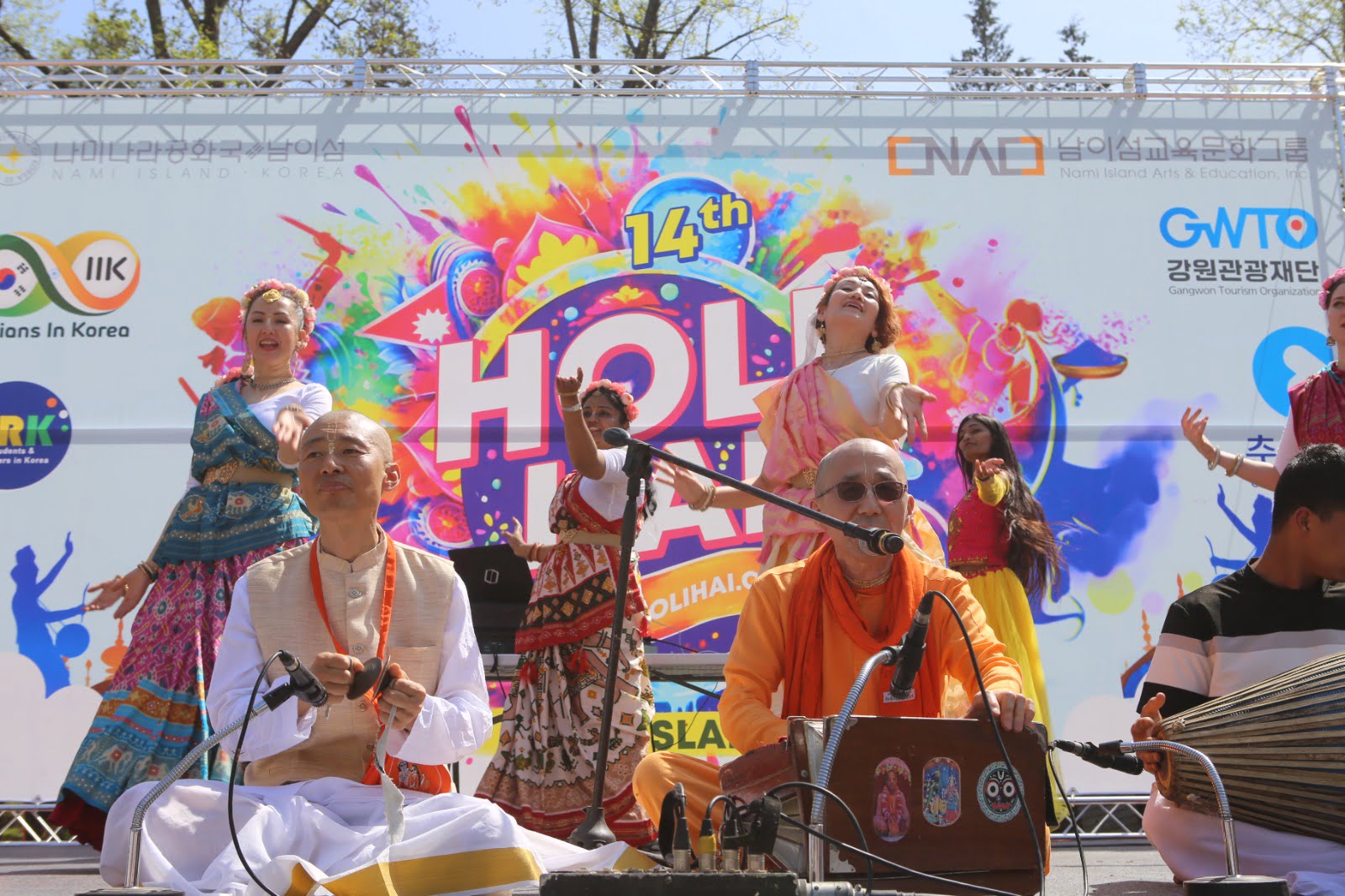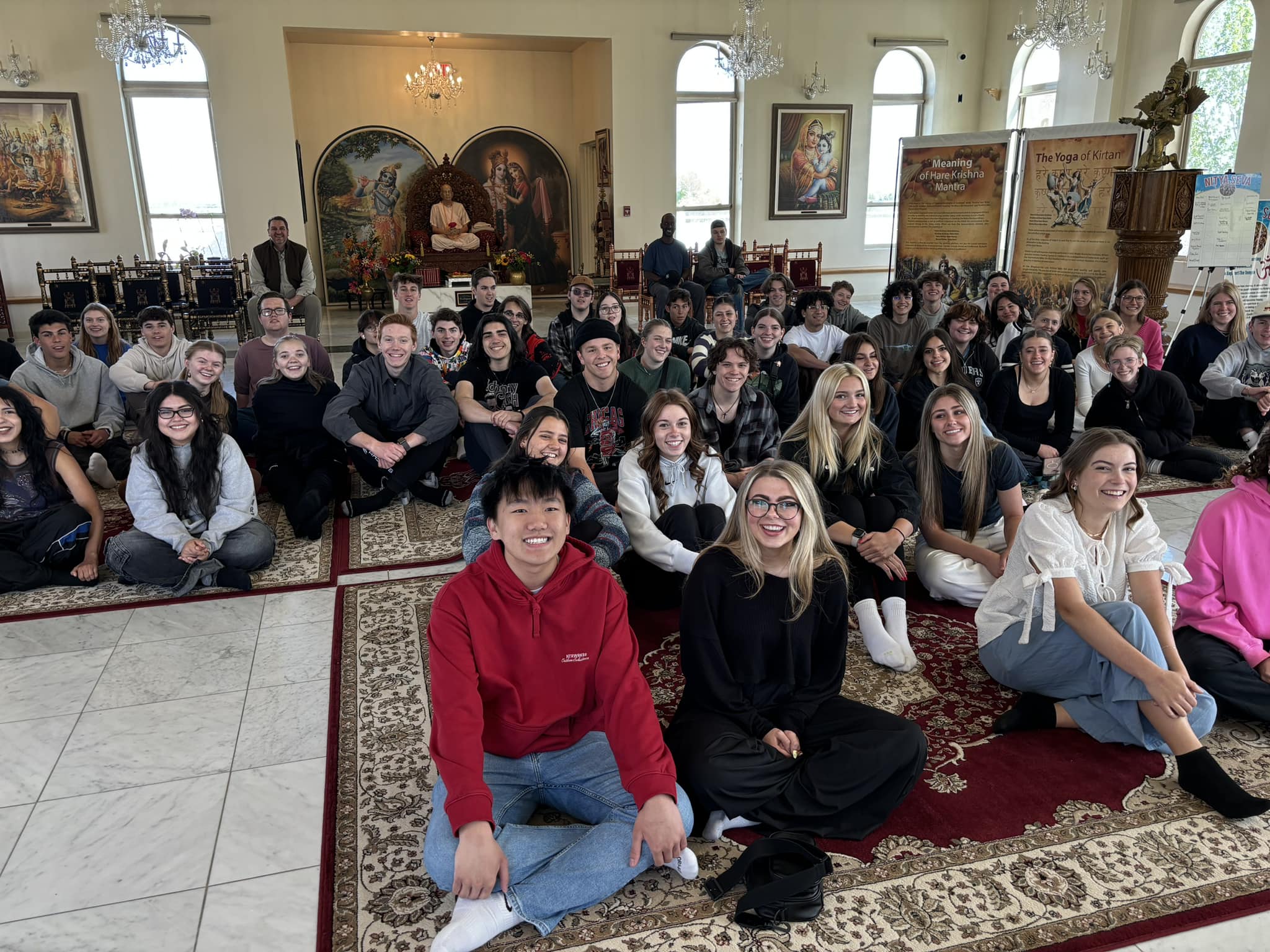Temple of the Vedic Planetarium Rises Ahead of Schedule
By Madhava Smullen | Apr 03, 2011
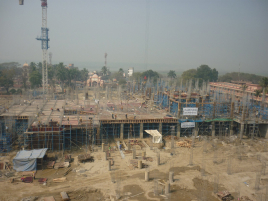
Perhaps the most amazing experience—in a month full of them—for devotees attending the annual Gaura Purnima festival at ISKCON’s headquarters in Mayapur, India this March was seeing the incredible construction progress of the Temple of the Vedic Planetarium.
It was back in 1976 that ISKCON founder Srila Prabhupada expressed his desire to build a grand temple that would “attract people of the whole world to Mayapur.” The temple, originally predicted by none other than Lord Nityananda, the most intimate associate of Sri Chaitanya Mahaprabhu, was to also include a planetarium within which Prabhupada wanted to construct “a huge, detailed model of the universe as described in the text of the fifth canto of Srimad Bhagavatam.”
But Srila Prabhupada passed on from this world without seeing his vision become a reality. Since then, many teams of his disciples have wrestled with the monumental project, with many devotees wondering if they would ever see the temple in their own lifetimes. The TOVP, as it’s nicknamed, took on a kind of mythical quality, a modern Vaishnava legend that many discussed but few could imagine actually becoming a reality.
This spring, however, devotees have returned home with an excited message for their friends and colleagues, “I have seen it! It’s really going up!”
The temple was inaugurated in February 2010, at a ceremony attended by ISKCON Governing Body Comissioners and senior disciples of Srila Prabhupada. Building work began immediately.
According to chairman Ambarisa Dasa and Managing Director Sadbhuja Dasa, due to an absence of the usual flooding in Mayapur this year, construction is currently ahead of schedule. It is also coming in under budget, and continuing to progress at a very rapid pace.
This is thanks to a very large and dedicated team. Project manager Pundarikaksa Govinda Dasa oversees more than fifty engineers and 800 laborers working on the construction site. They have already laid the foundation, which is built with high grade stainless steel reinforcement and will last for many hundreds of years—as opposed to normal concrete reinforcement which begins to rust within fifty years.
They are now working on the superstructure, which is quickly taking shape. Photos on the temple’s official website, TOVP.org, give us some idea of the gigantic scale, and show that three floors of the temple are already under construction, with signs marking the “Utility Floor,” “Pujari Floor,” and “Temple Room Floor.”
Meanwhile the engineering team, headed up by chief engineer and project advisor Mr. Vibhuti Choudury, is tackling the challenge of designing the engineering specifications for such a huge building on very sandy soil. Mr. Choudury is a partner in one of India’s largest engineering firms, which has previously worked on the Swaminarayan’s massive Akshardham complex in New Delhi, as well as Delhi’s tallest building the MCD Civic Center.
Then there’s the Pune-based TOVP architectural team, which is continuing to refine its designs for the exterior of the temple. At each progressive stage, more details are added—for instance, the latest 3D renderings show beautiful, giant images of Sri Chaitanya Mahaprabhu and Nityananda Prabhu on the front facing of the building.
Interestingly, Vilasini Dasi, who is coordinating the architectural and engineering plans, joined the project after completing her Master’s Thesis in architecture with the TOVP as her subject.
But most exciting is TOVP.org’s recently releasing the very first images of what the inside of the temple will look like—something the architectural team has only started working on in the past year. (These can be viewed in a video by visiting TOVP.org and clicking the photo of Ambarish Prabhu at the top of the page)
While these are only drawings, photos of similar architectural components, and initial 3D computer renderings, they give us the first glimpse of the incredible beauty, scale, and detail of the temple. And that glimpse is absolutely breath-taking—especially to devotees who have been waiting so long for it.
The first things that struck us here at ISKCON News were the altars, which will actually consist of an ornate, 140-foot-long and 35-foot-high “altar building” within the greater temple building.
Hanging from the ceiling of the great dome, above the altar building, will be a giant rotating model of the universe as described in the Srimad-Bhagavatam, in the form of a two-hundred-feet-across chandelier. The TOVP team were mainly focused on designing the movements of the planets, from the sun up to
Dhruvaloka until February 2010; now that this has been finalized, they are working on the full design of all fourteen planetary systems, from Brahmaloka to the subterranean planets.
Following Srila Prabhupada’s instructions, the circumference of the temple will be lined with verandas, which will house further exhibits depicting the different levels of planetary systems. In the recently released images, it appears that there are five or six levels, with beautiful ornate arches, stretching all the way up to the ceiling in a dizzying display of grandeur truly fit for the Supreme Personality of Godhead. From the top levels, it appears that visitors will be able to get an excellent side view of the rotating chandelier.
Above the verandas, a painting of Chaitanya Mahaprabhu and his followers blissfully chanting Harinama Sankirtana will stretch around the circumference of the building. Above them, in the center of the dome—which is over 300 feet, or thirty storeys high—will be a beautiful painting of Radha and Krishna.
Meanwhile the architectural and acoustics teams are currently developing an attractive coffered ceiling panel, similar to those popular in classical architecture in Rome and Florence, to line the interior of the dome.
The inner surface of the dome will be lined with two inches of glass wool, a commonly used acoustical material, which will solve sound reverberation problems that would have occurred with a marble-clad dome. It’s of high importance to the TOVP team to design the temple as a pleasing acoustical space, considering it will be the headquarters of the Krishna Consciousness Movement, and should therefore be a model example of kirtan.
Excited by all these developments, many devotees have moved to Mayapur from all over the world to join the TOVP staff, which reflects the diversity of the International Society for Krishna Consciousness.
The latest video on TOVP.org shows many of these devotees, wearing dhotis or saris with hard hats and gloves, standing on the construction site and speaking to us in their native languages. There are Bengali, Hindi, Polish, Russian, Spanish, Italian, and even Mandarin Chinese and Zulu devotees.
Seeing such a global community of devotees, standing in front of this rapidly rising monument to Sri Chaitanya Mahaprabhu’s mercy, is deeply moving and inspiring.
We are reminded of the great Vaishnava saint Bhaktivinode Thakura’s vision of an effulgent city in Mayapur with a wonderful temple at its center, as well as his prediction that many devotees from all nationalities would assemble there to sing the names of Krishna and Chaitanya.
Nityananda Prabhu also made the same prediction, stating, “One exceedingly wonderful temple (adbhuta-mandira) will appear from which Gauranga’s eternal service will be preached everywhere.”
These days at ISKCON Mayapur, it’s like seeing a prophecy unfold before our very eyes. This is a magical and exciting time for ISKCON, and we wish the TOVP every success in their realization of the previous acharyas’ desires.
ISKCON News will continue to update you about the progress of the new temple, and we also encourage you to visit TOVP.org for all the latest news.
Click here to see a panoramic view of the TOVP construction site: http://tovp.org/en/media-gallery/panoramic-views/158-magnificent-panoramic-view-of-the-construction-site
To view the images described in this article in video form, please visit TOVP.org and click on the photo of Ambarish Prabhu at the top of the page.





